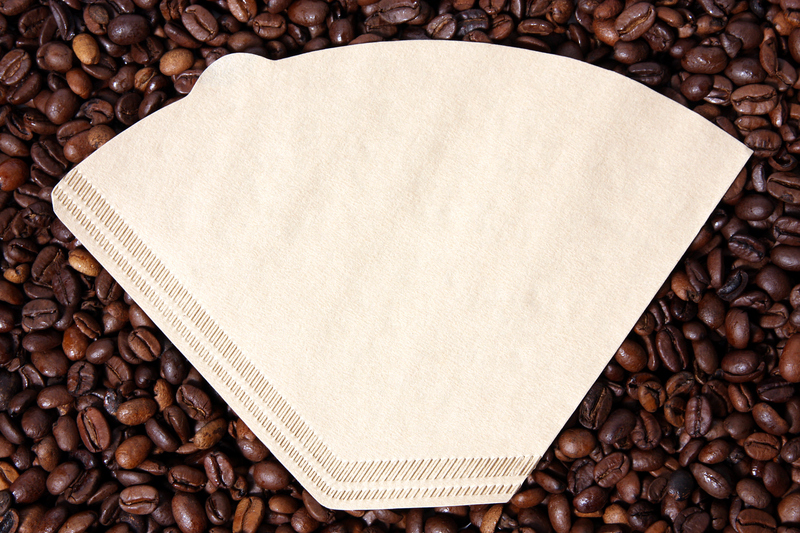Wave Goodbye to Damp Smells Once and for All
Posted on 27/08/2025
Wave Goodbye to Damp Smells Once and for All: Your Ultimate Guide
Have you noticed a musty odor lingering in your home, car, or office? Whether it's the earthy scent coming from your basement or the unpleasant damp smell clinging to towels and fabrics, getting rid of damp odors can be more challenging than you think. Wave goodbye to damp smells once and for all with our comprehensive guide filled with practical tips, proven techniques, and vital information about combating bad smells at their source.
Understanding the Origins: What Causes Damp Smells?
Before you can effectively eliminate damp smells, it's crucial to understand their root causes. Damp odors--often described as musty or moldy--typically arise from:
- Mold and mildew growth
- Poor ventilation
- Water leaks or spills
- High humidity levels
- Condensation on walls or windows
- Improperly dried laundry
- Damp surfaces in bathrooms, basements or kitchens
- Old carpets or upholstery absorbing moisture
Mold and mildew thrive in moist, warm environments. When dampness lingers, these microorganisms flourish, releasing spores that contribute to the distinctive unpleasant aroma. By identifying the source of moisture, you're already a step closer to deodorizing your space.

Comprehensive Solutions to Remove Damp Odors
You don't have to simply mask the scent; it's possible to eliminate damp smells permanently by addressing the underlying issues. Below, we'll explore actionable steps to help you achieve a truly fresh and clean environment.
Step 1: Locate and Fix Moisture Issues
- Inspect for leaks: Check pipes, roofs, windows and basements for any sign of water ingress. Promptly repairing leaks is the first step in getting rid of persistent damp odors.
- Improve ventilation: Proper air flow helps dry out damp areas and disperses musty smells. Use extractor fans in bathrooms and kitchens, and open windows whenever possible.
- Check insulation and seals: Faulty seals around doors and windows may allow moisture in. Replace or repair as needed.
- Inspect hidden spaces: Don't forget to look behind appliances, under sinks, and inside closets, as mold can thrive out of sight.
Step 2: Thorough Cleaning and Disinfecting
- Clean affected surfaces: Use a solution of water and vinegar, hydrogen peroxide, or specialized mold remover to scrub away visible mold. Wear gloves and a mask for safety.
- Launder fabrics: Wash clothing, curtains, and soft furnishings at high temperatures. Add a cup of white vinegar to the wash cycle to eliminate deep-set odors.
- Shampoo carpets and upholstery: Rent a carpet cleaner or hire professionals. Pay special attention to underlay and padding, which can harbor mold.
- Dispose of unsalvageable items: Sometimes, old carpet, waterlogged furniture, or mold-infested boxes must be discarded.
Step 3: Dry and Dehumidify
Once cleaned, it's essential to thoroughly dry the affected areas:
- Invest in a dehumidifier: Reducing humidity levels below 60% inhibits mold growth and helps wave goodbye to musty smells.
- Increase air flow by using fans, opening doors and windows, and leaving closet doors ajar.
- Sunlight is your friend: If possible, expose rooms and items to direct sunlight. UV rays naturally kill mold spores and freshen the air.
Step 4: Neutralize Lingering Odors
- Baking Soda: An exceptional odor absorber, sprinkle baking soda on carpets, upholstery, shoes, or mattresses. Leave overnight and vacuum thoroughly.
- Activated Charcoal: Place bowls or pouches of activated charcoal around problem areas to naturally absorb dampness and odors.
- Vinegar: Place a bowl of white vinegar in the room overnight to help neutralize stubborn smells.
- Essential Oils: Add a few drops to a spray bottle of water for a natural, pleasant aroma. Options like tea tree oil and eucalyptus also have antifungal properties.
- Commercial odor eliminators: For severe cases, use products specifically formulated for moldy, musty spaces.
Room-by-Room Tips to Wave Goodbye to Damp Smells
Basements and Cellars
- Seal walls and floors: Apply waterproof paint or sealant to prevent moisture seeping through concrete.
- Use a sump pump in flood-prone areas to redirect water away from your home.
- Store items off the ground on shelving units to reduce the risk of mold.
- Install a dedicated dehumidifier if your basement is consistently damp.
Bathrooms
- Regularly clean grout and tiles with an antifungal cleaner.
- Run an extractor fan during and after showers to prevent condensation buildup.
- Hang towels to dry fully between uses and launder them frequently.
- Check under sinks for hidden leaks or mold patches.
Kitchens
- Fix leaking faucets and pipes promptly.
- Keep trash bins clean and consider using liners to prevent odor buildup.
- Run extractor fans when cooking to reduce steam and condensation.
- Regularly disinfect under sinks and behind appliances.
Bedrooms
- Don't leave damp clothes or towels in hampers for extended periods.
- Air bedding regularly and wash at high temperatures.
- Keep closets decluttered to promote airflow.
- Use wardrobe dehumidifiers or moisture-absorbing sachets.
Common Mistakes: What Not to Do When Fighting Damp Smells
- Ignoring ventilation: Failing to keep air moving allows moisture to settle and odors to worsen.
- Relying solely on air fresheners: These only mask, not solve, the root problem.
- Delaying action: The longer mold grows, the harder it is to remove and the smellier it gets!
- Not inspecting hidden areas: Condensation and leaks are often out of sight.
- Overlooking soft furnishings: Sofas, curtains, and carpets can soak up moisture and harbor smells.
Best Practices for Preventing the Return of Damp Odors
- Maintain healthy indoor humidity: Keep levels between 30-50% using dehumidifiers or air conditioners.
- Ventilate every day, even in winter. Just a 5-10 minute window open in each room can make a big difference.
- Dry laundry outside when possible: Avoid drying clothes indoors on radiators or racks.
- Use moisture absorbers in problem areas: Silica gel, calcium chloride or activated charcoal pouches work well in wardrobes and under sinks.
- Regularly inspect for leaks and fix immediately.
- Clean gutters and downspouts to ensure rainwater drains away from foundations.
When to Call the Experts: Professional Solutions for Stubborn Damp Odors
Sometimes, despite your best efforts, damp smells linger or keep returning. This could be a sign of a deeper problem such as rising damp, severe structural leaks, or an extensive mold infestation. If you notice any of the following, it's wise to consult a professional:
- Persistent headaches, allergies, or respiratory symptoms linked to mold exposure
- Visible mold growth spreading rapidly
- Structural dampness or walls that are constantly wet to the touch
- Moldy smells returning soon after cleaning
Professional mold remediation specialists can carry out:
- In-depth inspections using hygrometers and thermal imaging
- Moisture barrier installation
- Extreme mold removal and sanitization
- Advice on long-term waterproofing
Natural Remedies for Banishing Damp Smells
If you prefer a more eco-friendly approach to wave goodbye to musty odors, try these gentle but effective remedies:
- White vinegar spray: Mix equal parts vinegar and water; spray onto surfaces and allow to dry. The odor will dissipate as it dries, taking mustiness with it.
- Lemon juice and baking soda paste: Scrub moldy grout or tile for a fresh clean.
- Zeolite minerals: These natural stones absorb moisture and odors, ideal for wardrobes and cars.
- Coffee grounds: Place in a bowl in musty areas for a pleasant scent swap.
- Open jars of rice: A classic desiccant, rice absorbs invisible moisture in small rooms or cupboards.

Frequently Asked Questions: Damp & Musty Smells
Can air fresheners eliminate damp odors?
Air fresheners can provide temporary relief but do not tackle the cause of damp smells. For a lasting solution, remove the source of the moisture and mold.
Is it safe to use bleach to remove mold smell?
Bleach can kill surface mold and mask the odor, but it doesn't penetrate porous surfaces and may be unsafe without proper ventilation. Opt for natural alternatives or call a professional for severe infestations.
Why do my clothes still smell musty even after washing?
Washing machines themselves can harbor mold and mildew. Run a hot wash with vinegar or a machine cleaner monthly to keep it fresh.
How long does it take for musty smells to go away?
With prompt action, light odors may disappear within hours or days. Persistent problems caused by deeper moisture issues may require more extensive repairs and ongoing vigilance.
Can I use essential oils to mask damp odors?
Essential oils such as tea tree, eucalyptus, or lavender offer a temporary improvement and some antifungal benefits, but they should accompany--not replace--proper cleaning and moisture removal.
Take Action Today: Enjoy a Fresher, Healthier Home
Damp, musty smells are more than just a nuisance--they can signal underlying moisture issues and even affect your health. By finding the source, cleaning thoroughly, drying the space, and taking steps to prevent moisture from returning, you can wave goodbye to damp smells once and for all.
- Stay vigilant about leaks and spills
- Invest in quality ventilation and dehumidification solutions
- Pursue regular cleaning habits and quick action when issues arise
A fresh-smelling, comfortable space is within your reach--and it starts with these proven steps. Say farewell to musty odors and breathe easier today!
```




